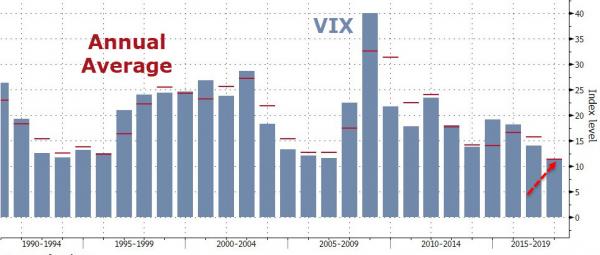
While intra-month the CBOE Volatility Index reached its highest since November, before plunging back to earth into the end of the month, VIX is still on track to post its lowest annual average on record.

Bloomberg notes that in the past decade, VIX gains in August were followed by September declines in all but one instance.
While VIX has collapsed so far this year, it may not last.
Though VIX ended up paring its August gain to 3.2% – a gauge tracking longer-term wagers posted its biggest increase since January 2016.

In fact, after last month’s 11 percent gain, the CBOE S&P 500 3-Month Volatility Index has reached its highest level relative to the VIX since Aug 2012’s European credit crisis.

The September Federal Reserve gathering and debt-ceiling discussions are among events that could lead to increased market volatility at a time when the S&P 500 Index trades near a record high.
















